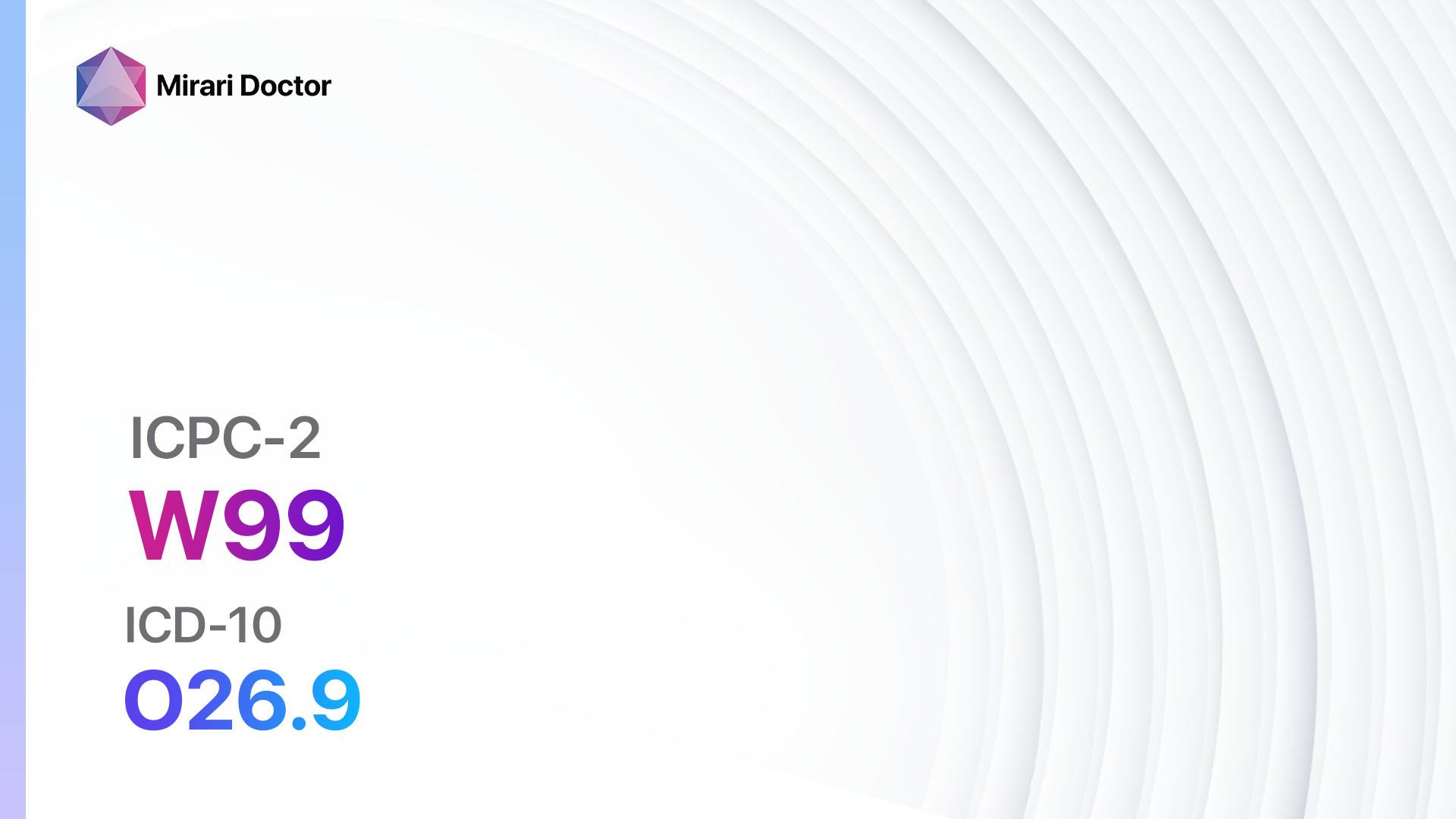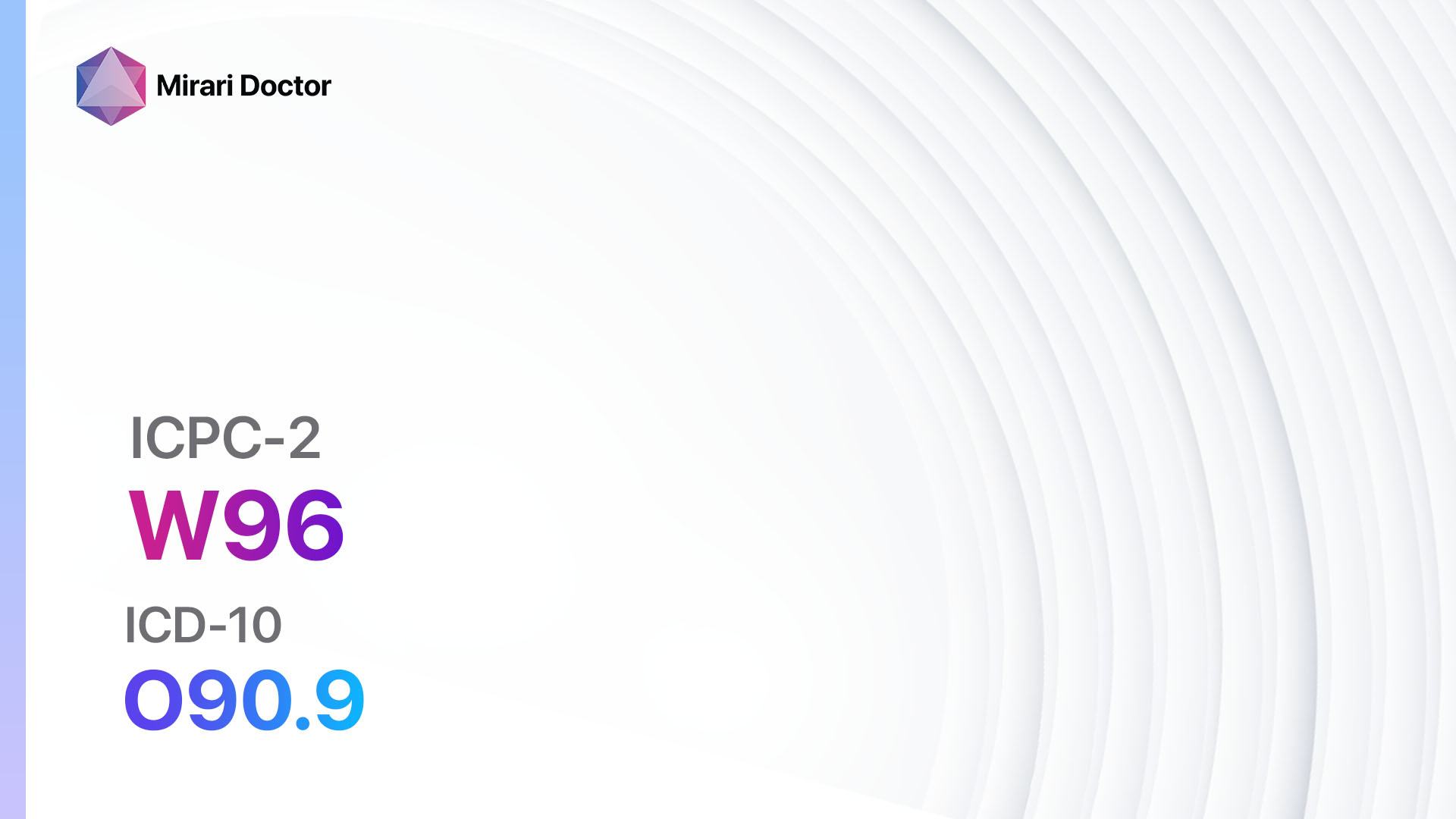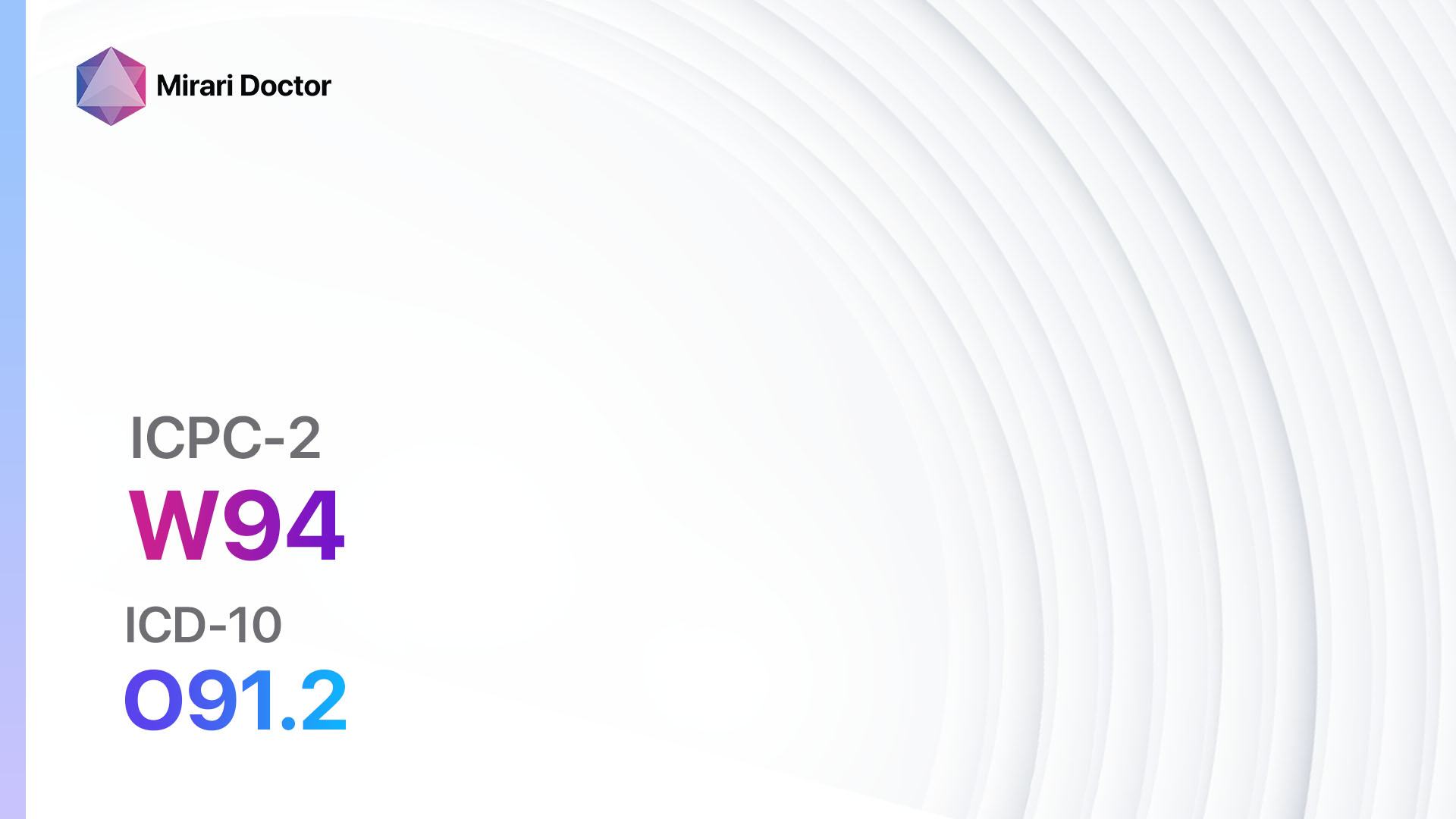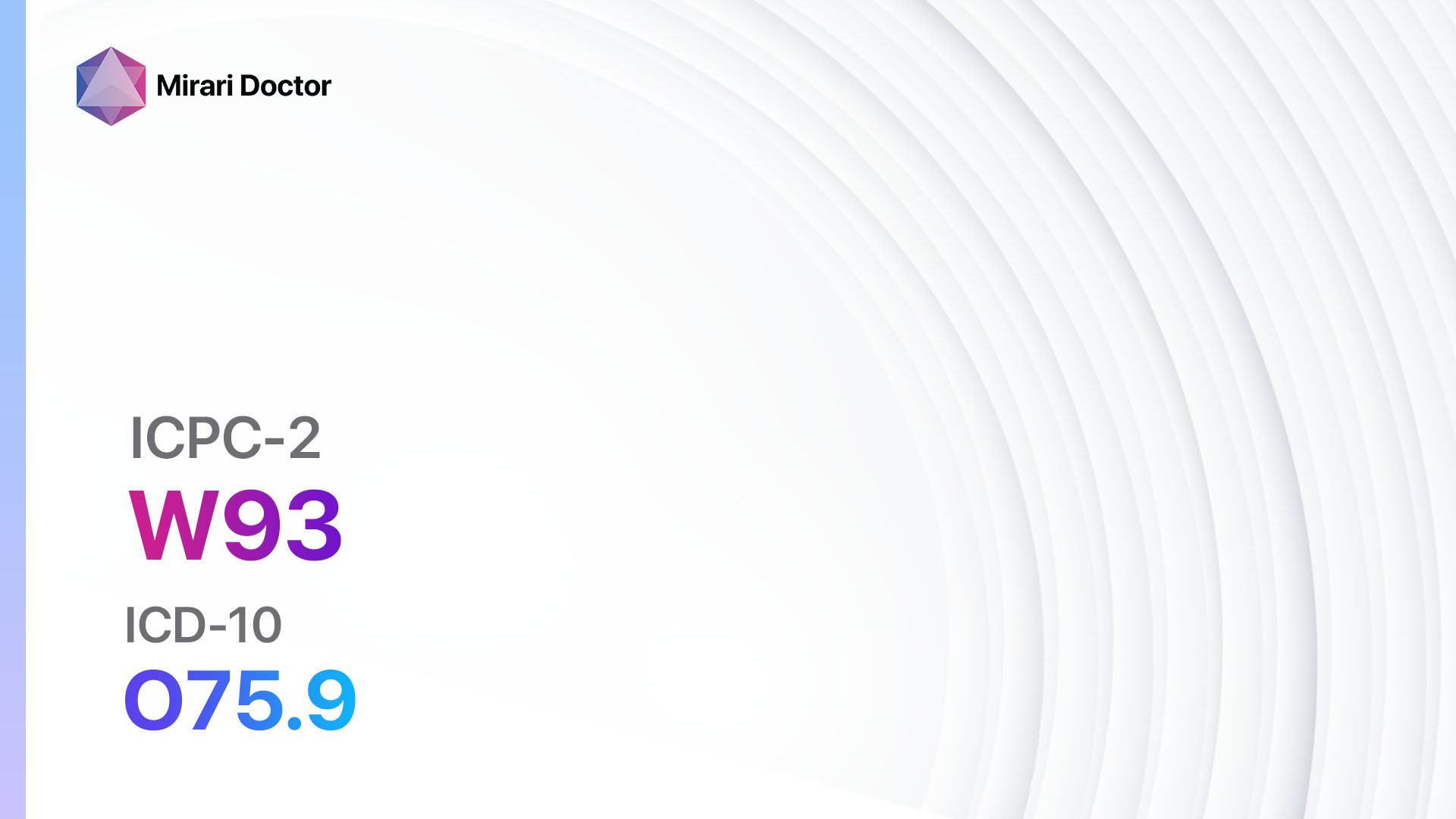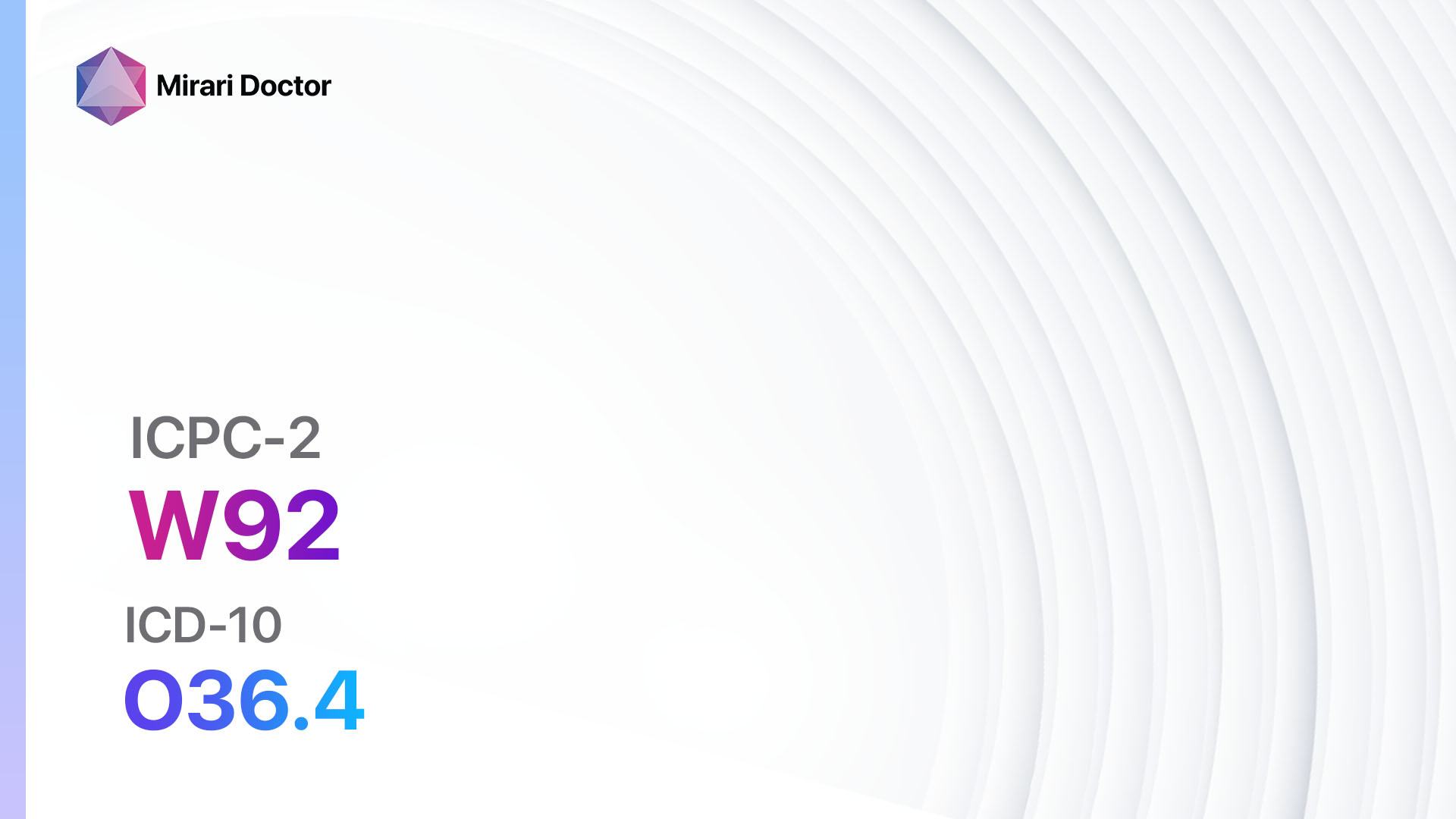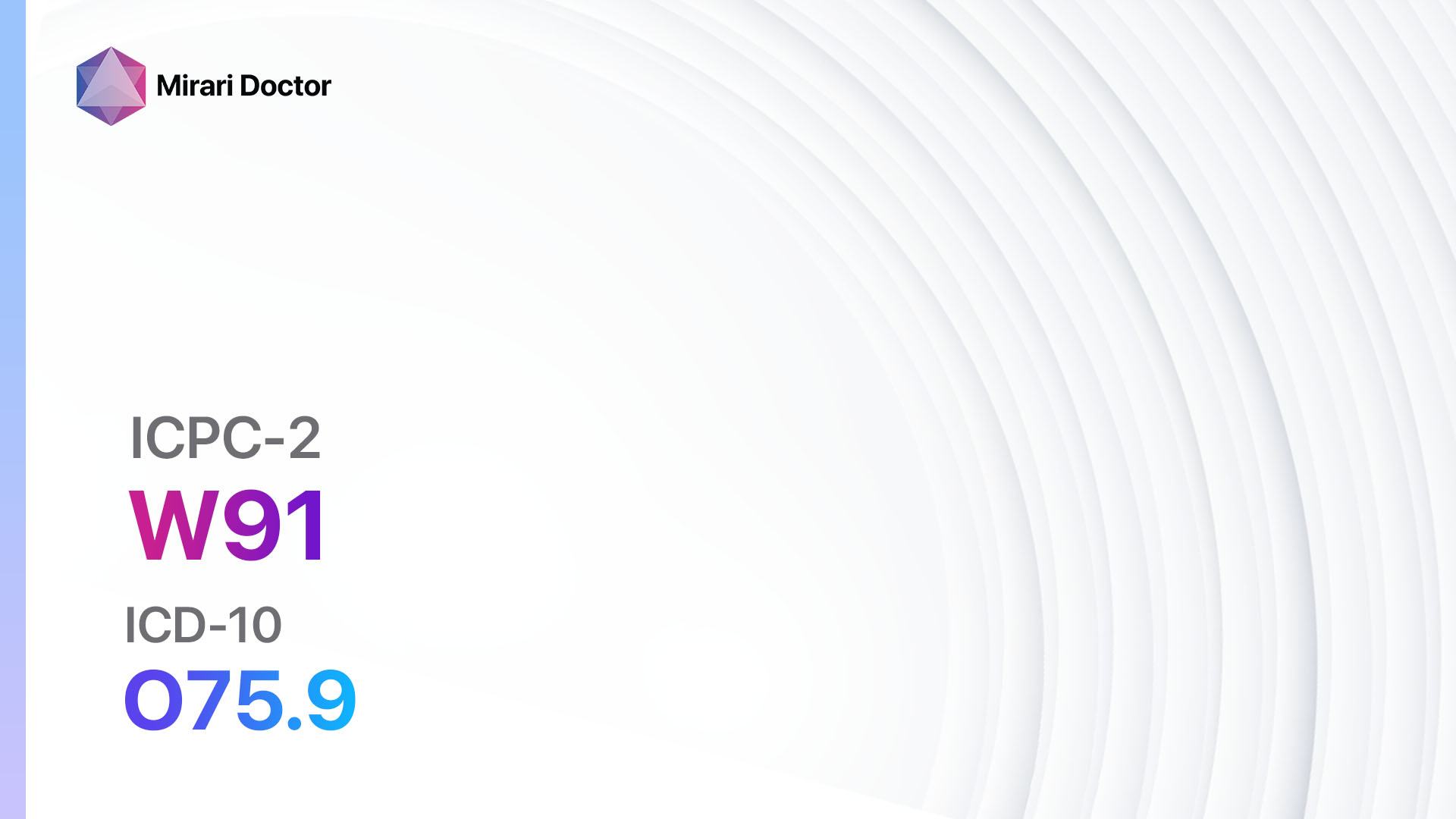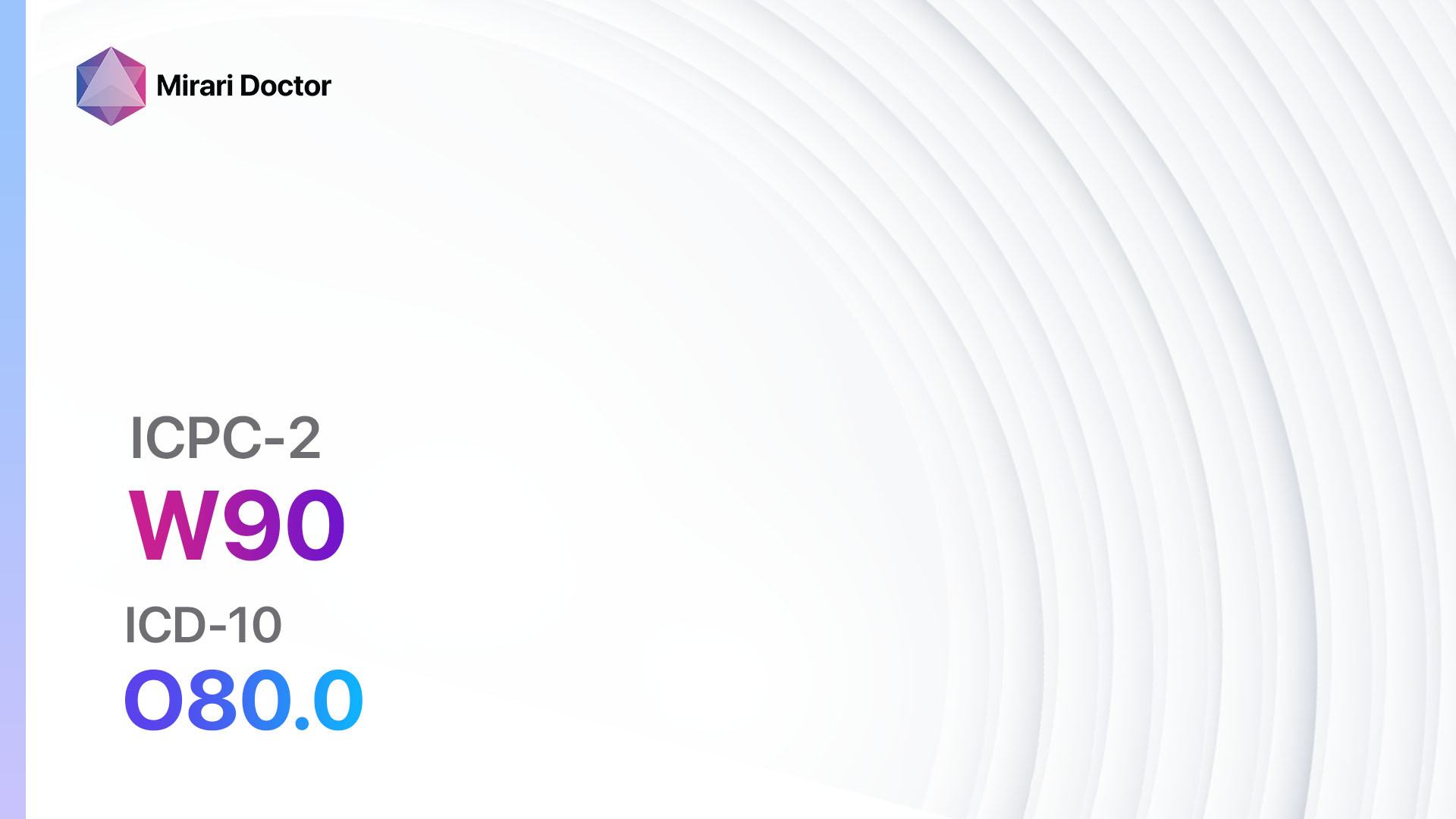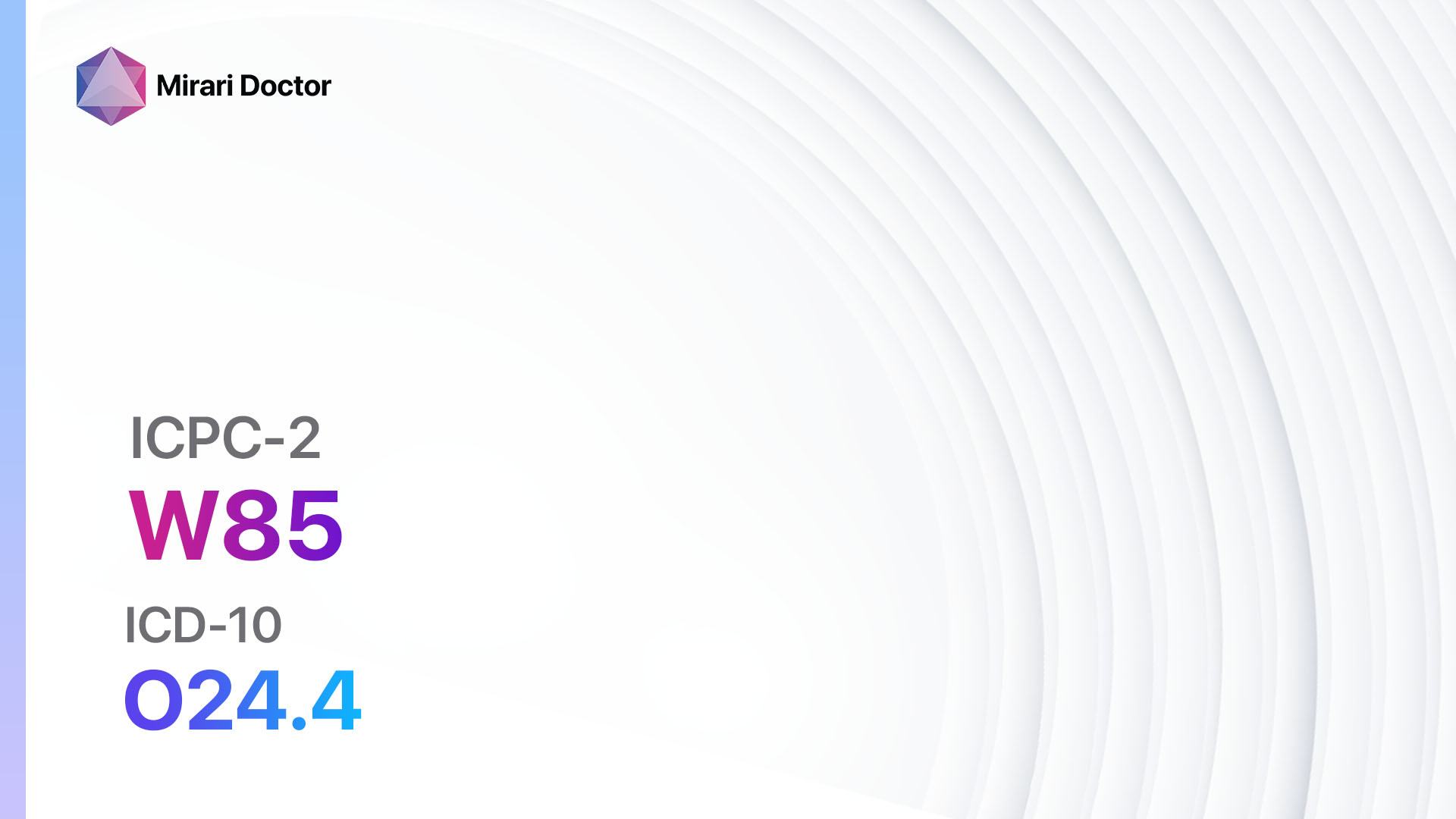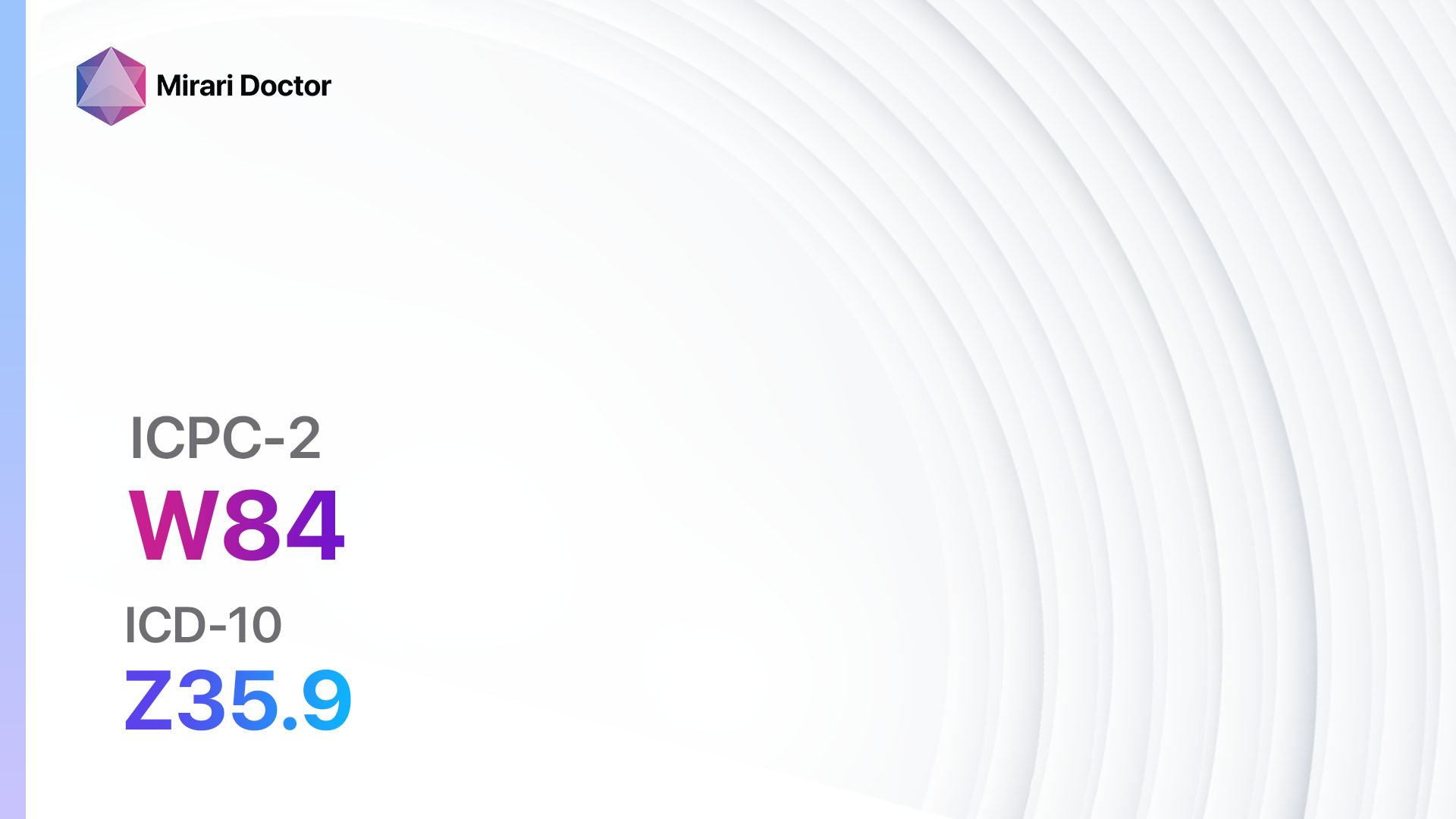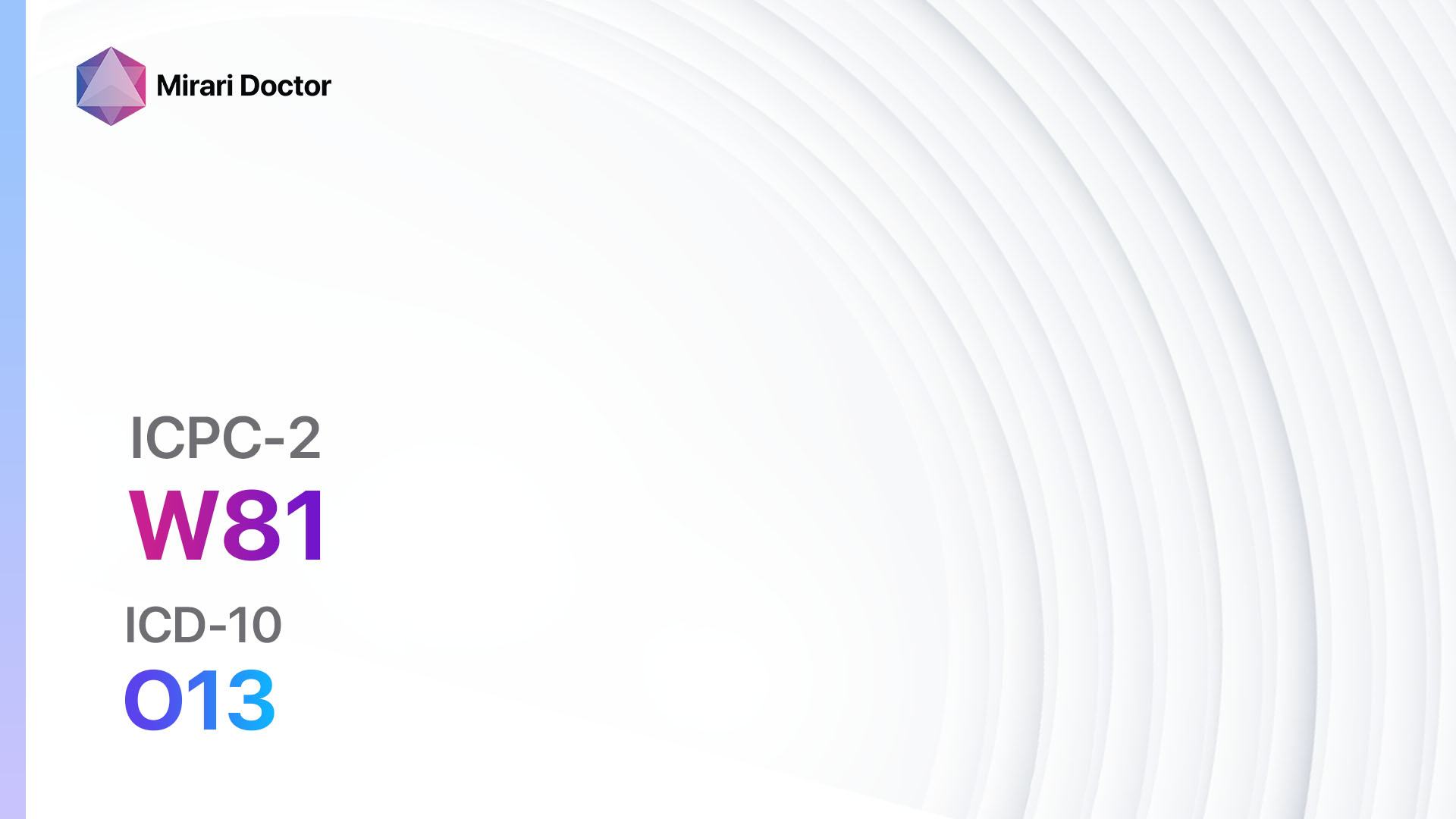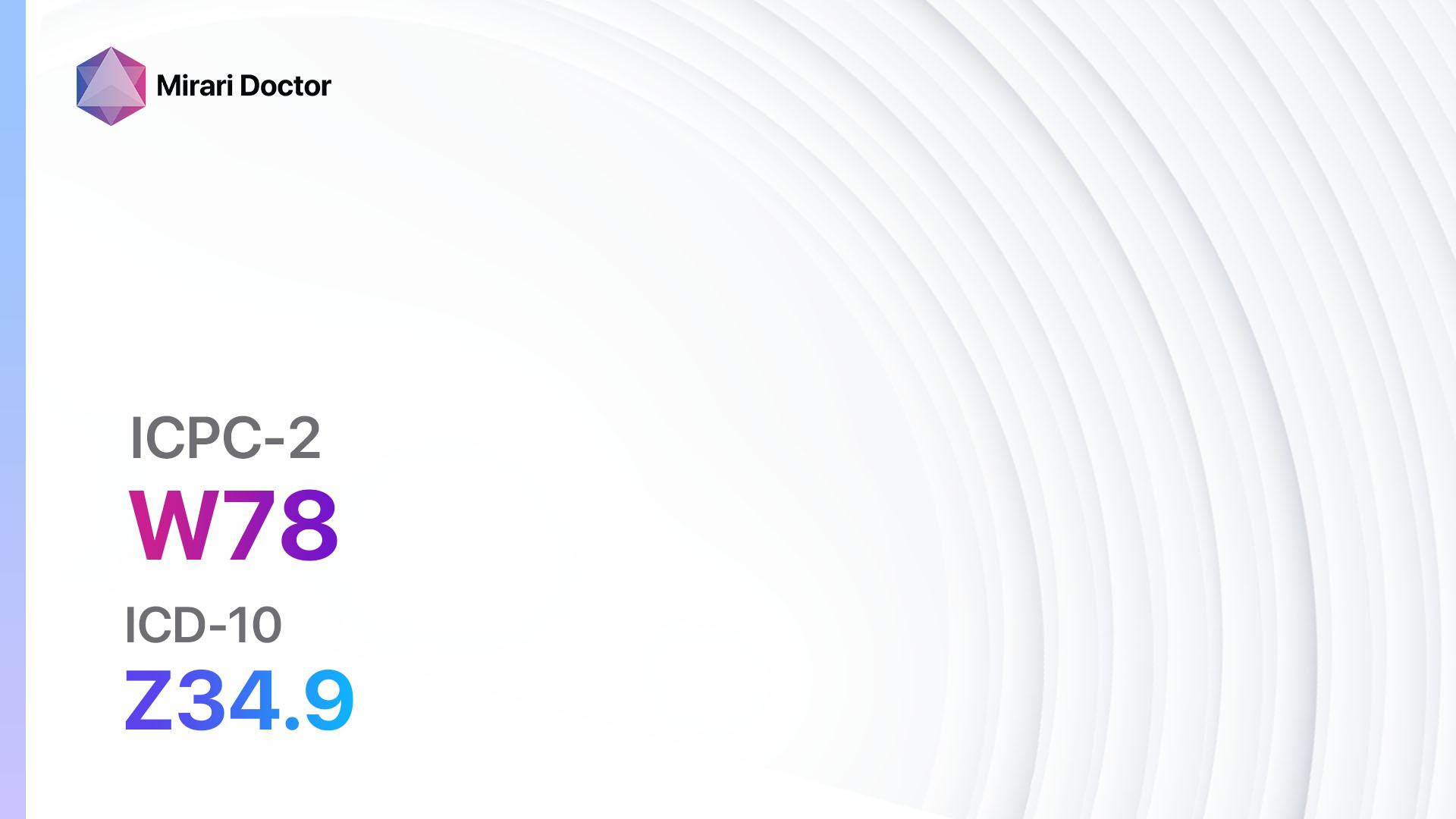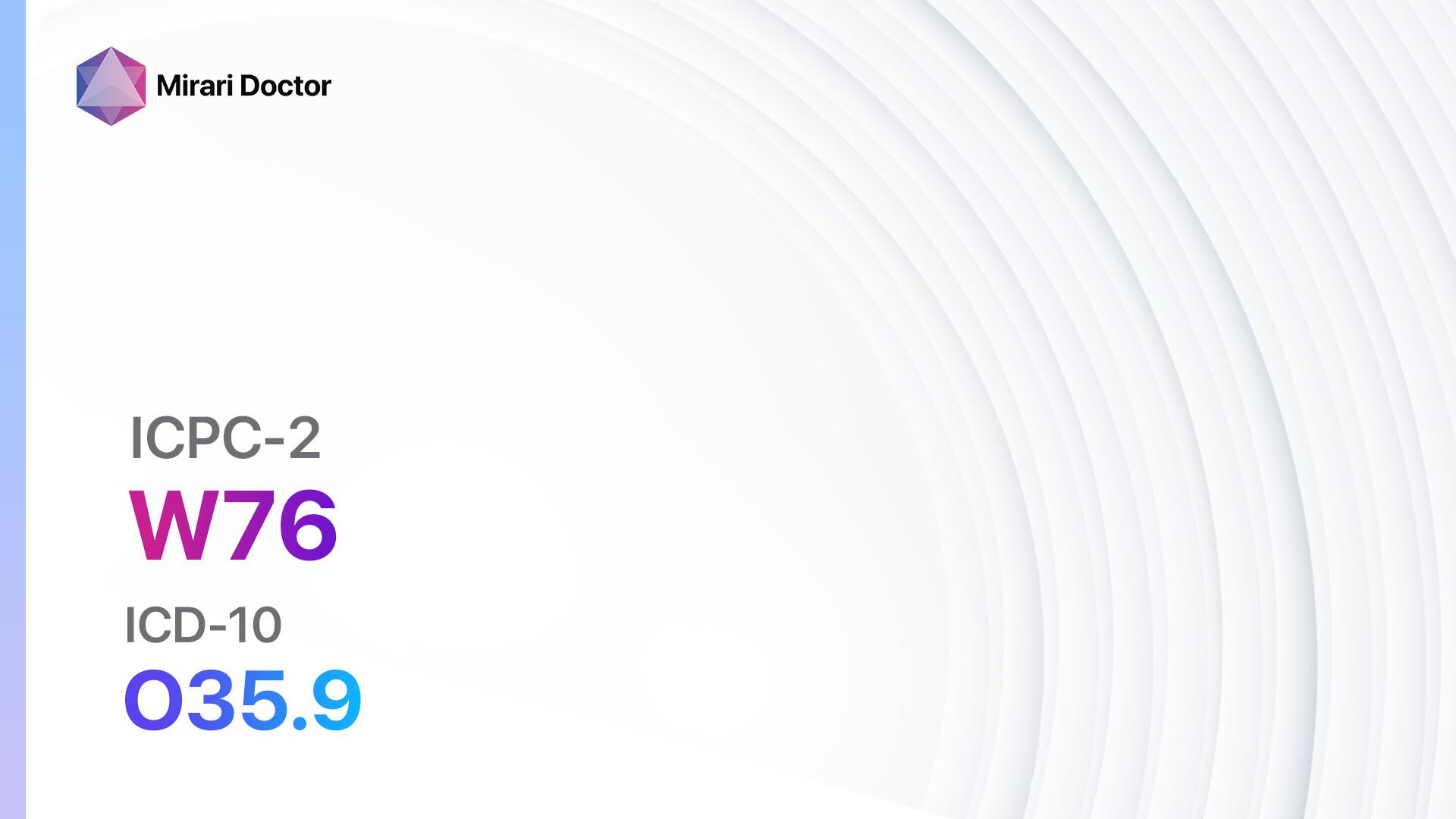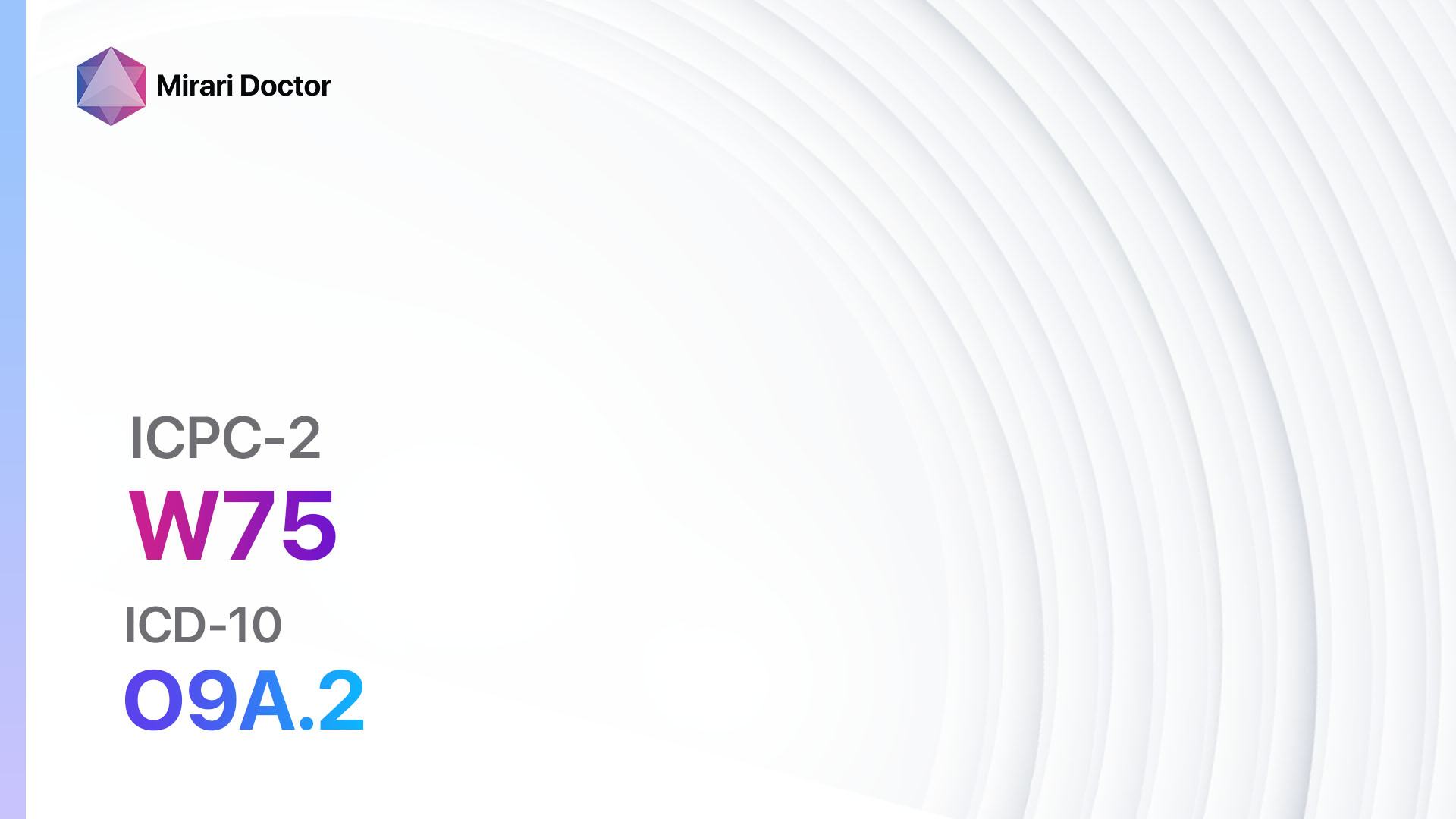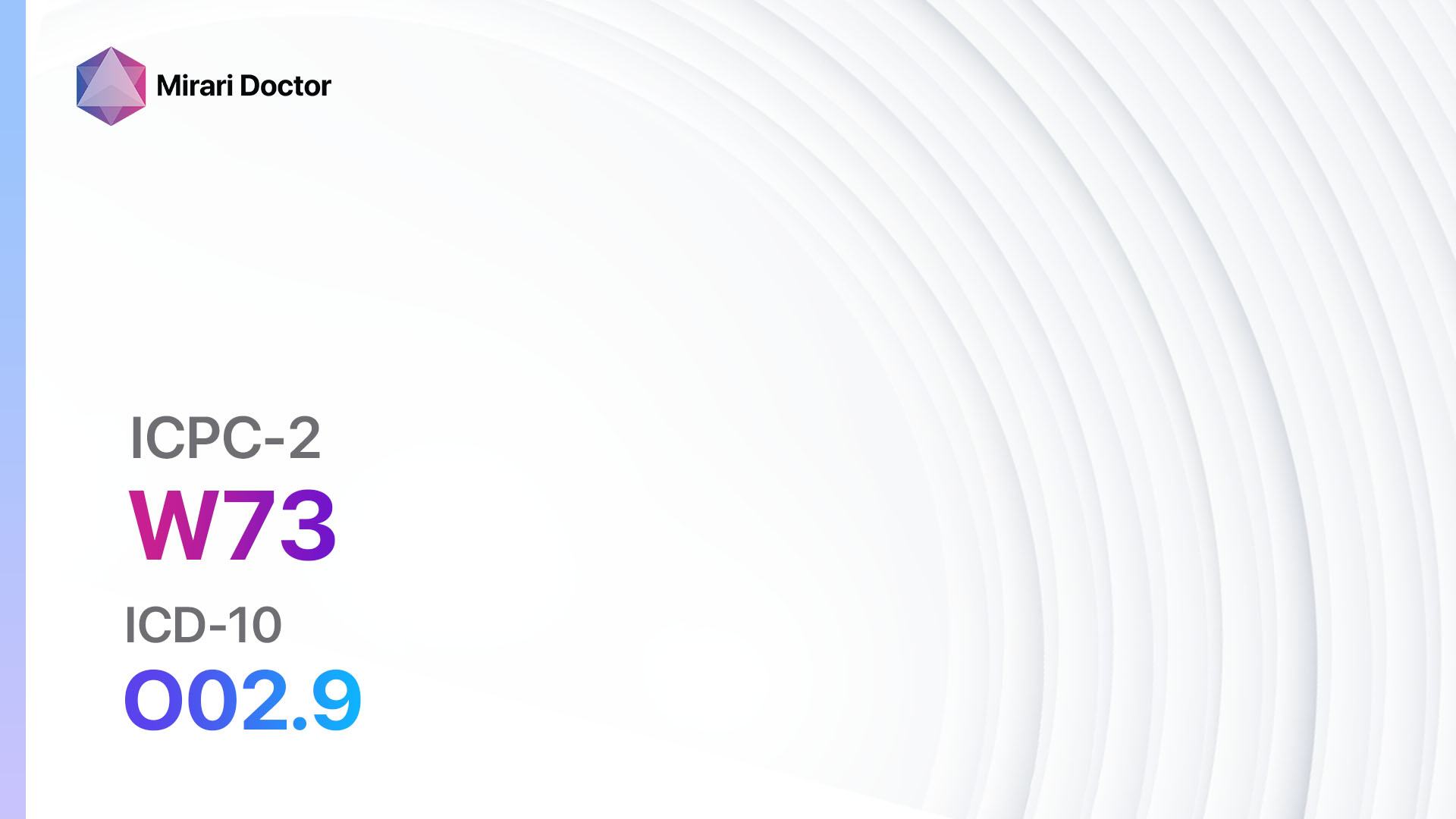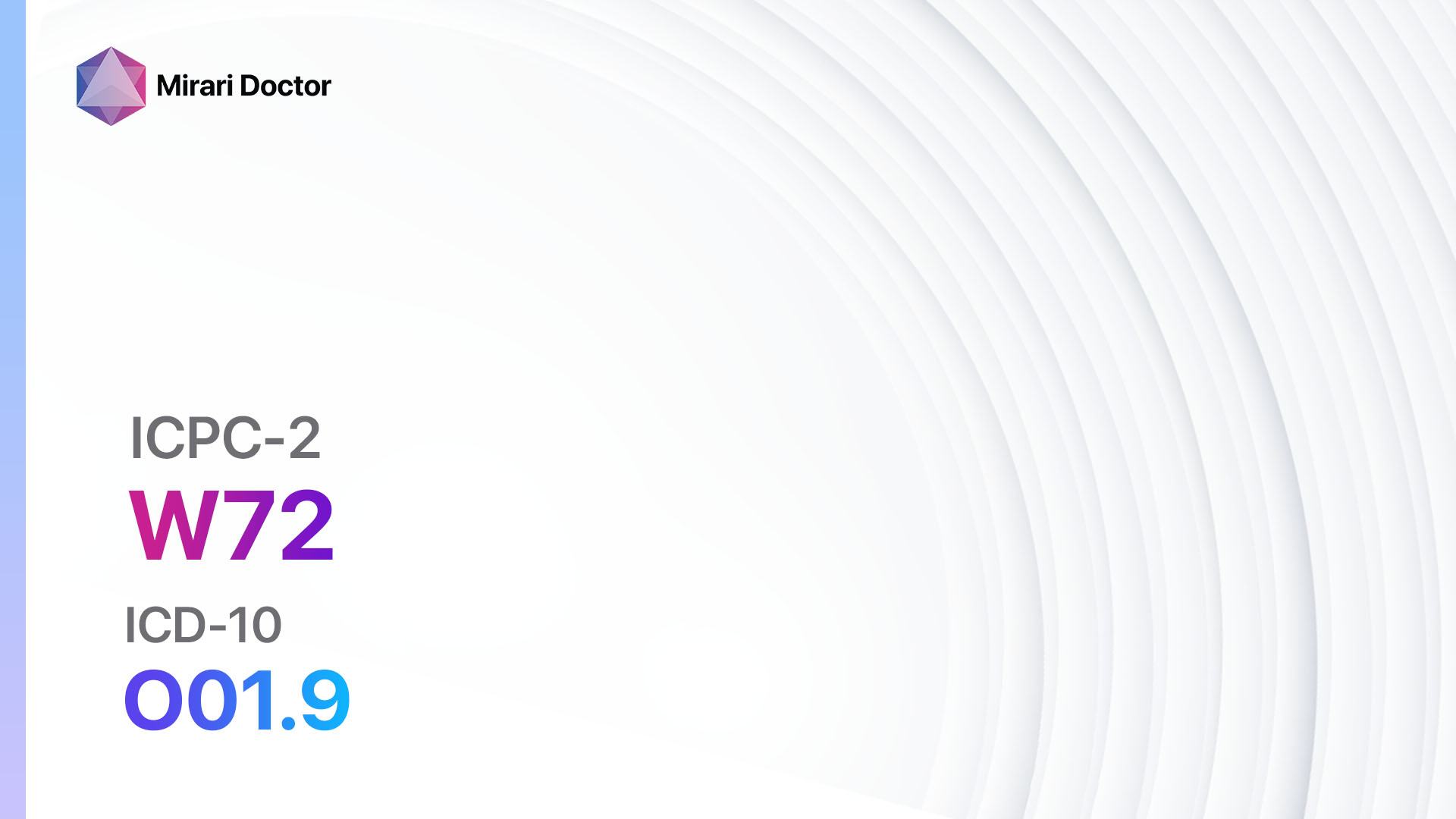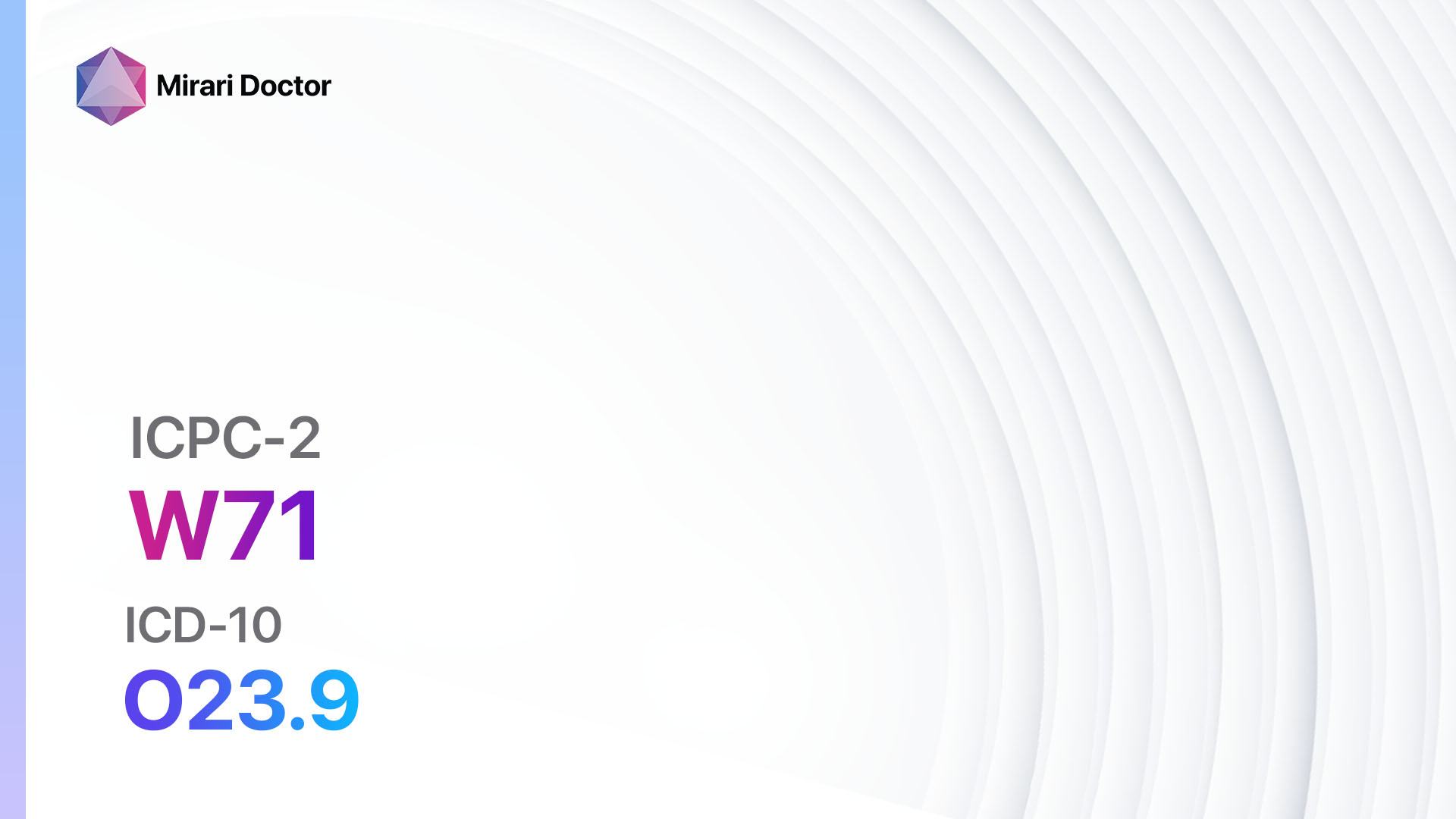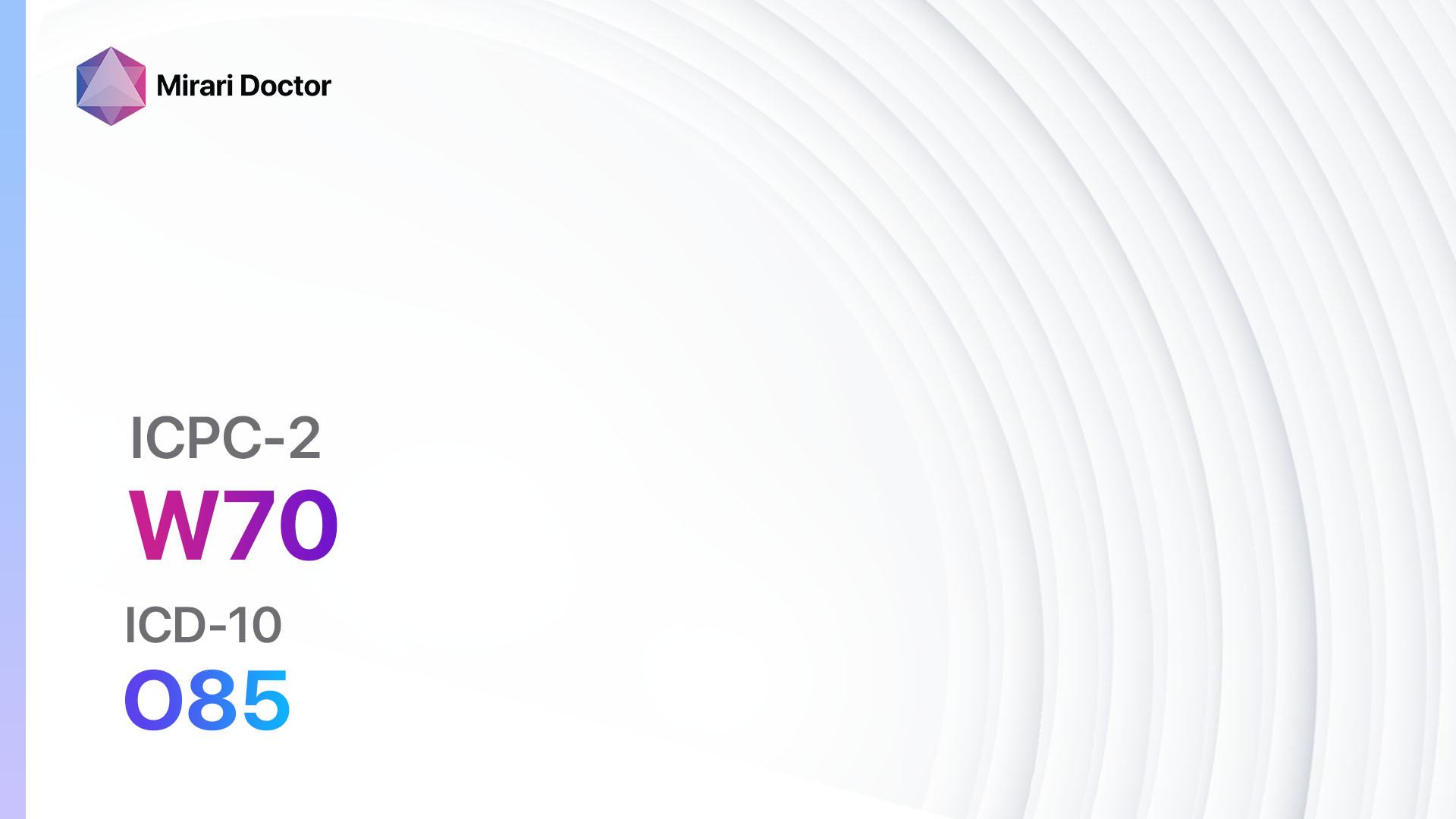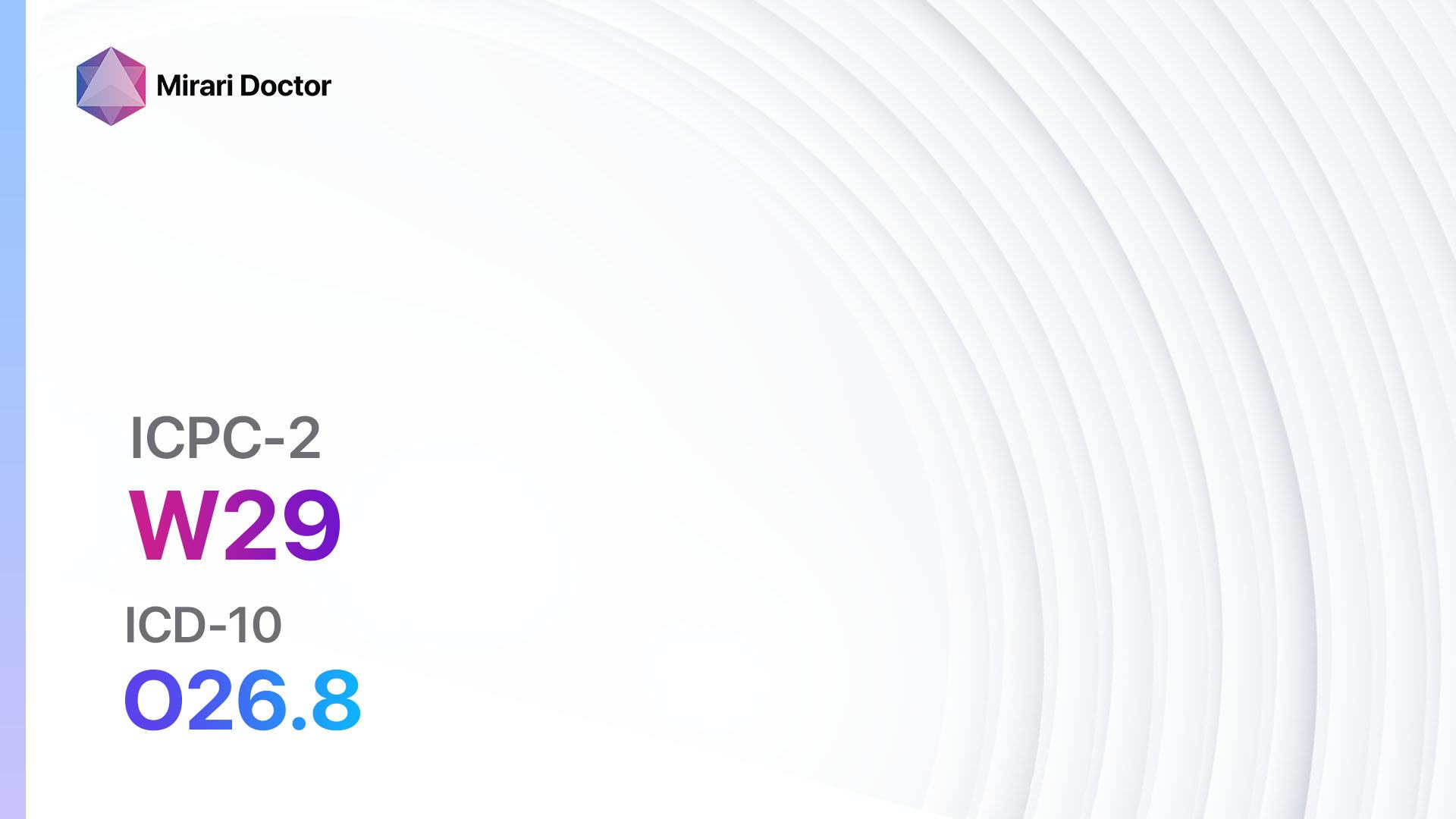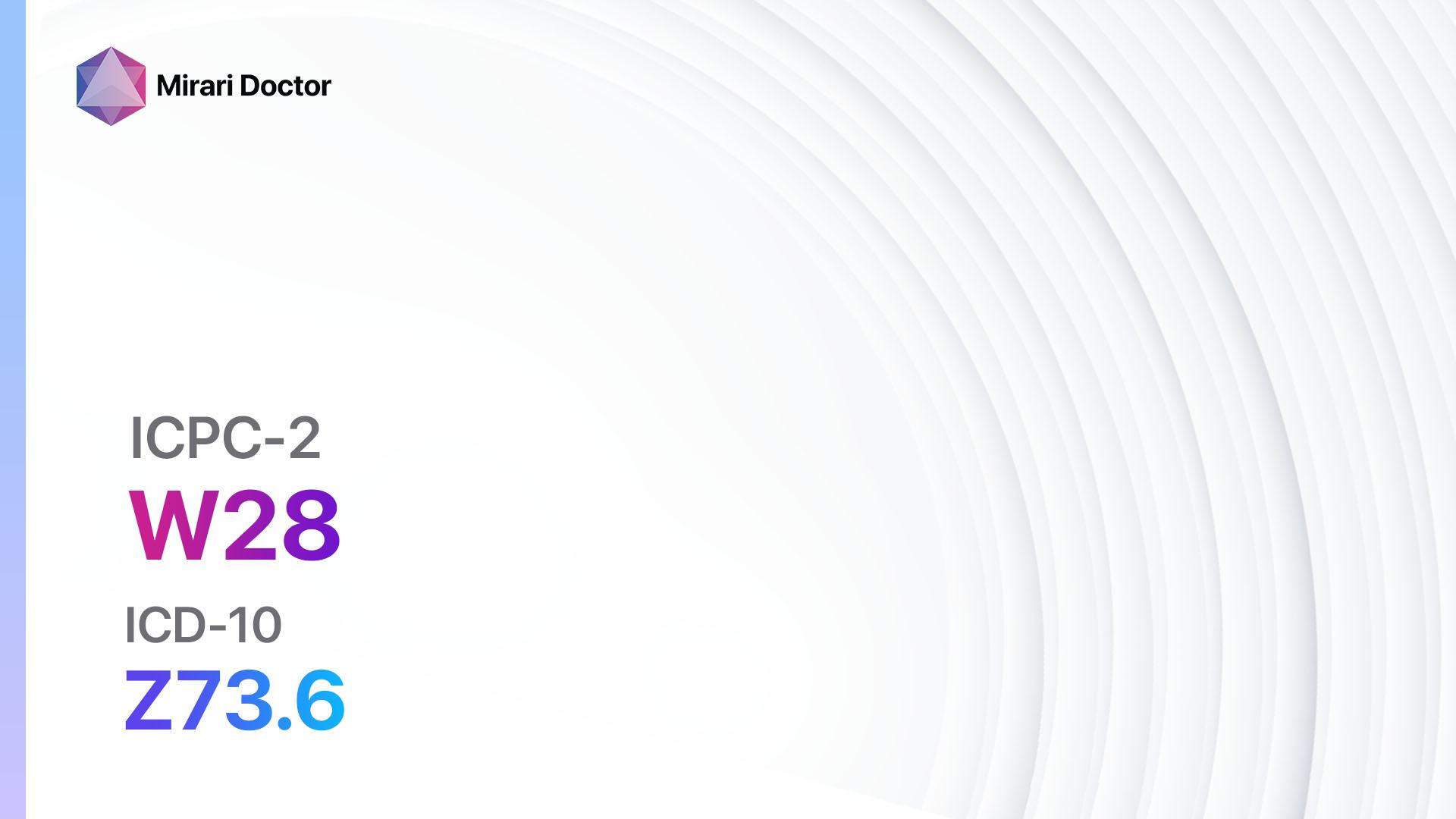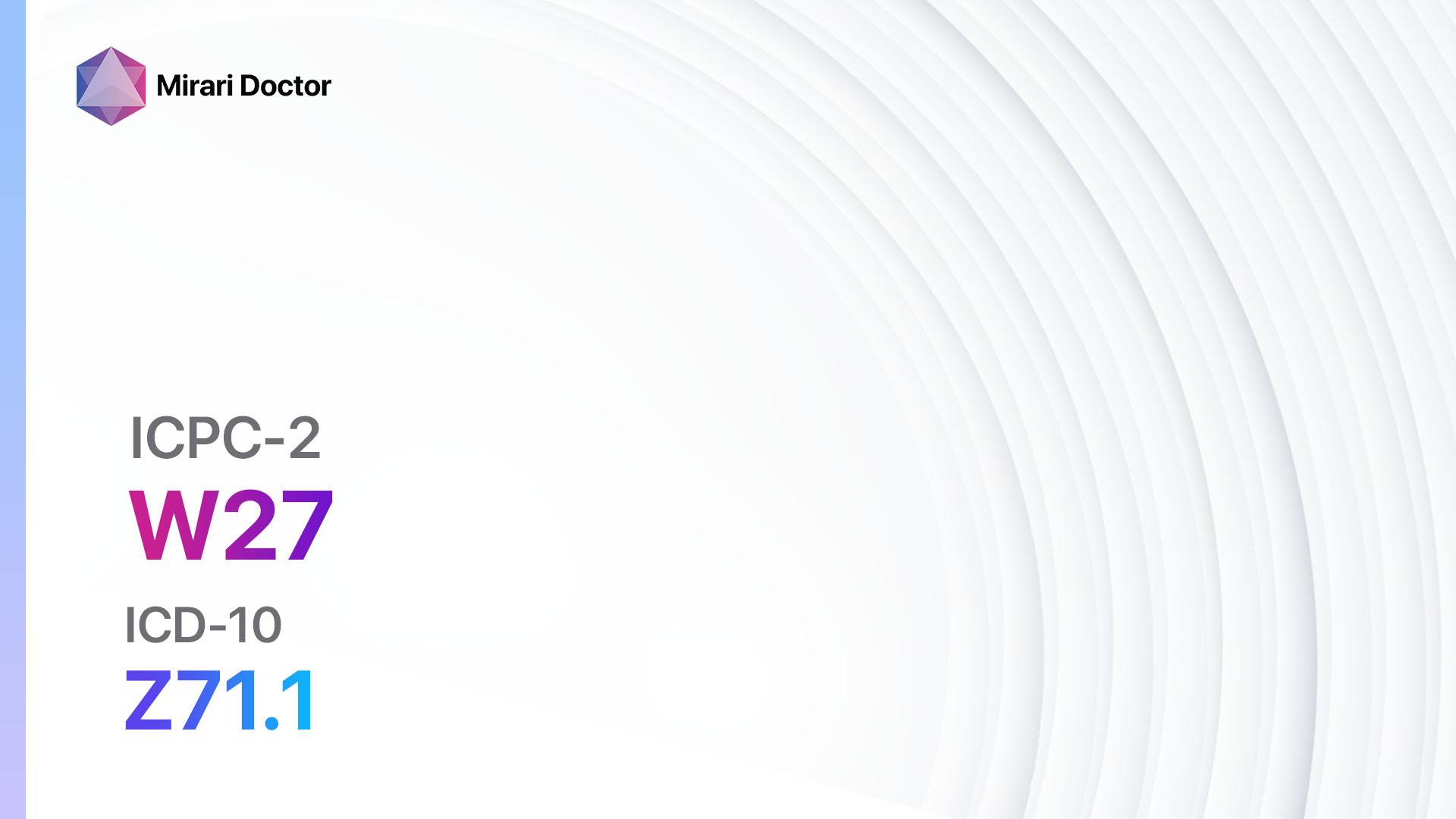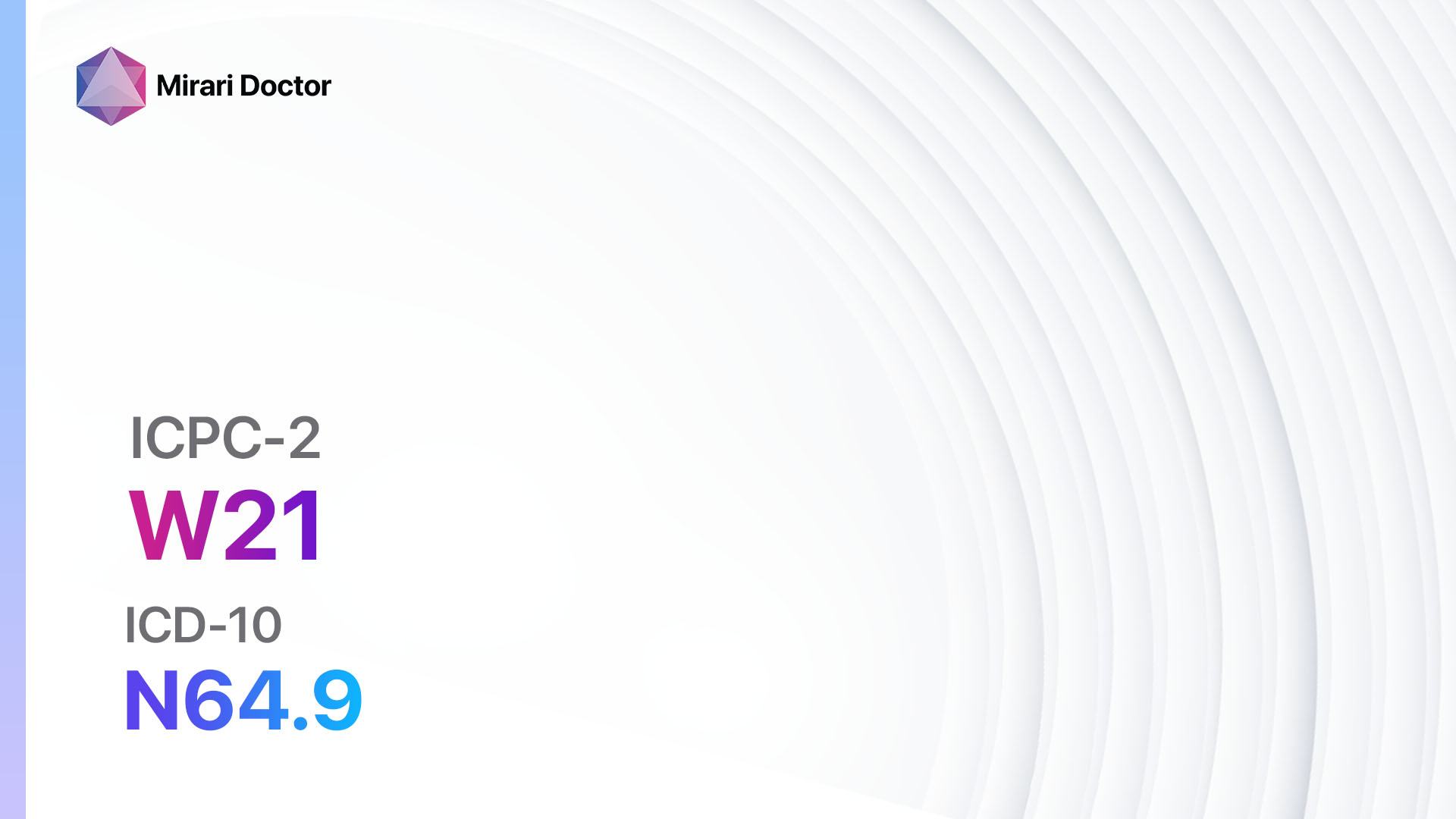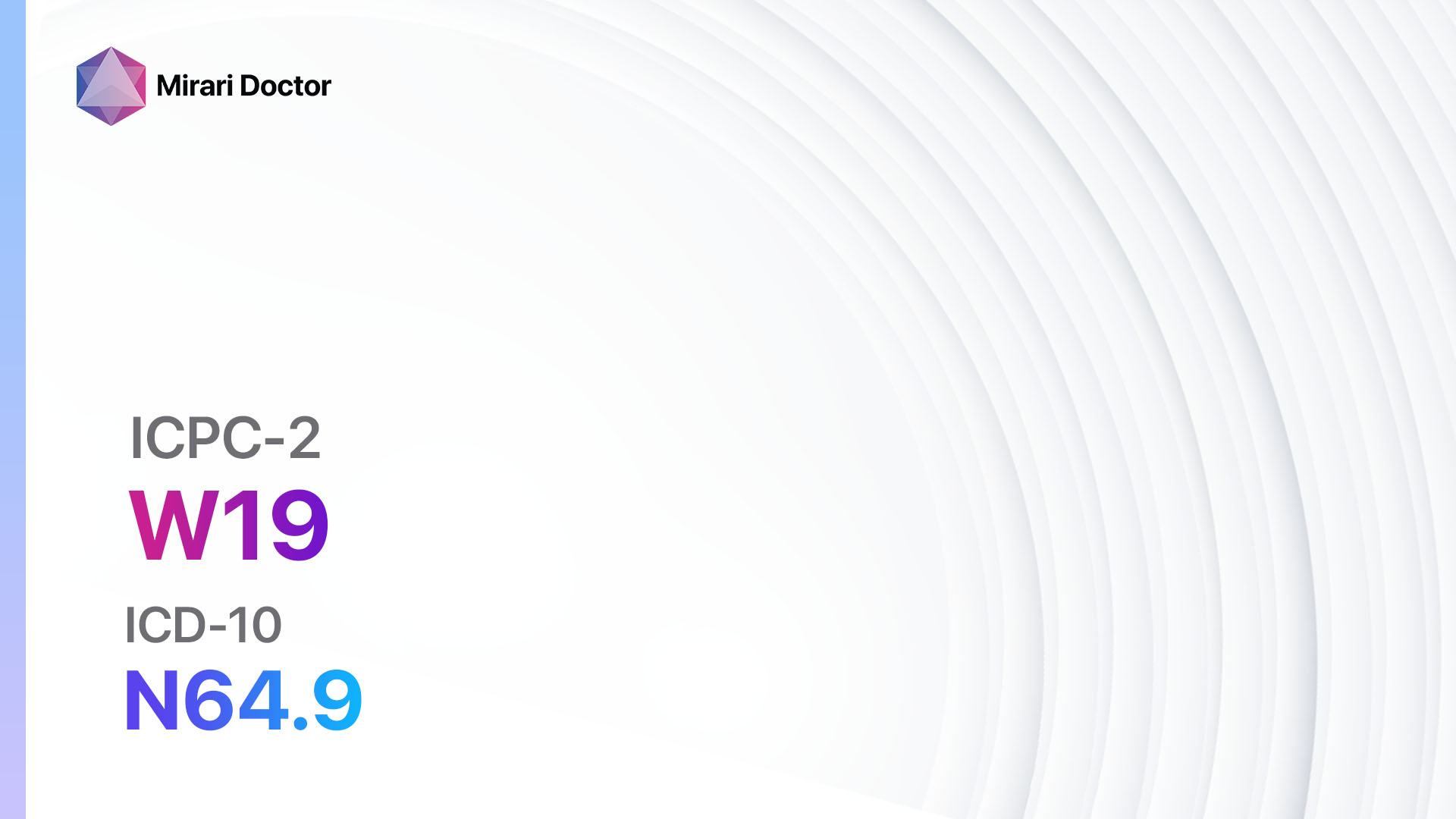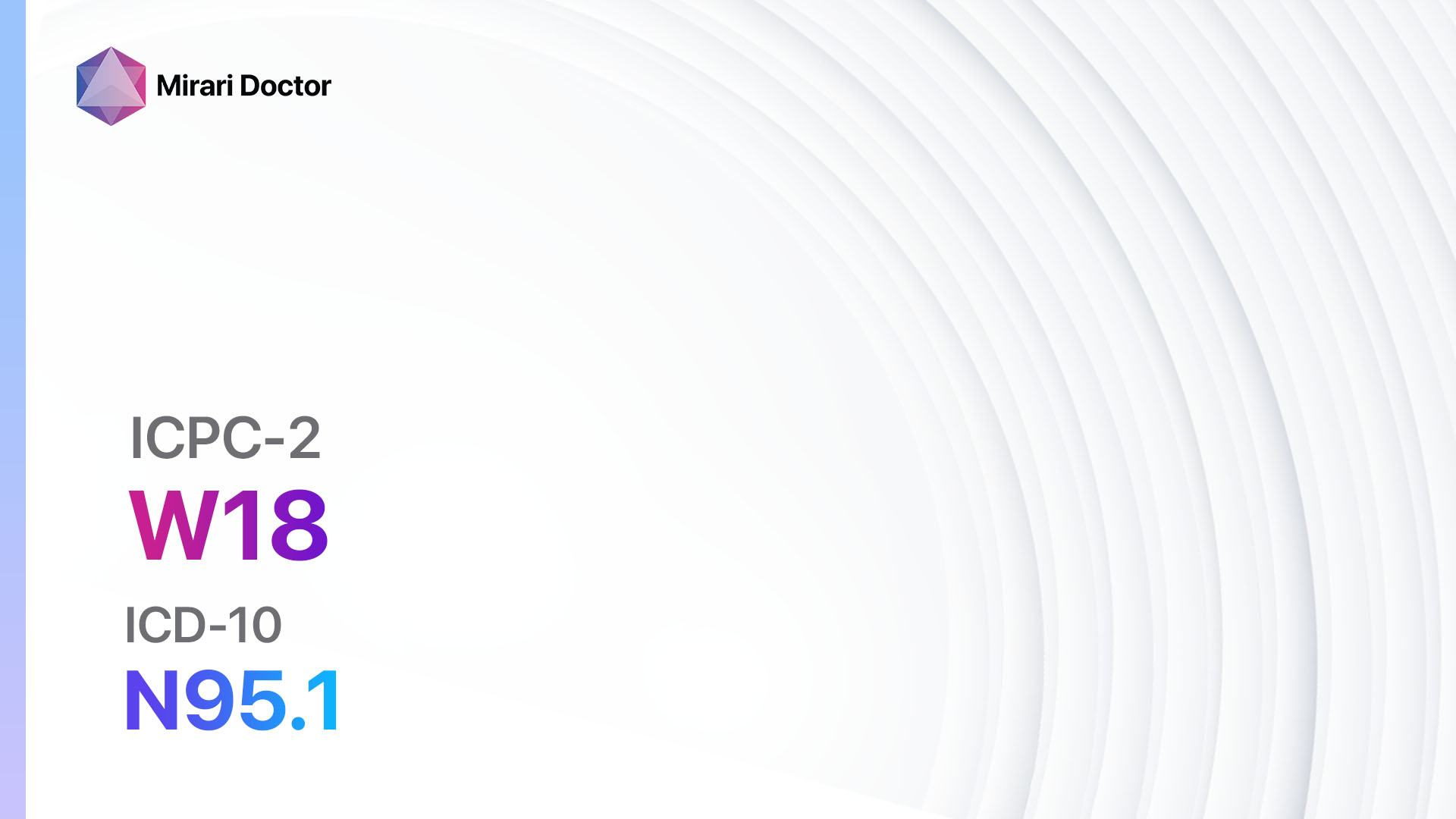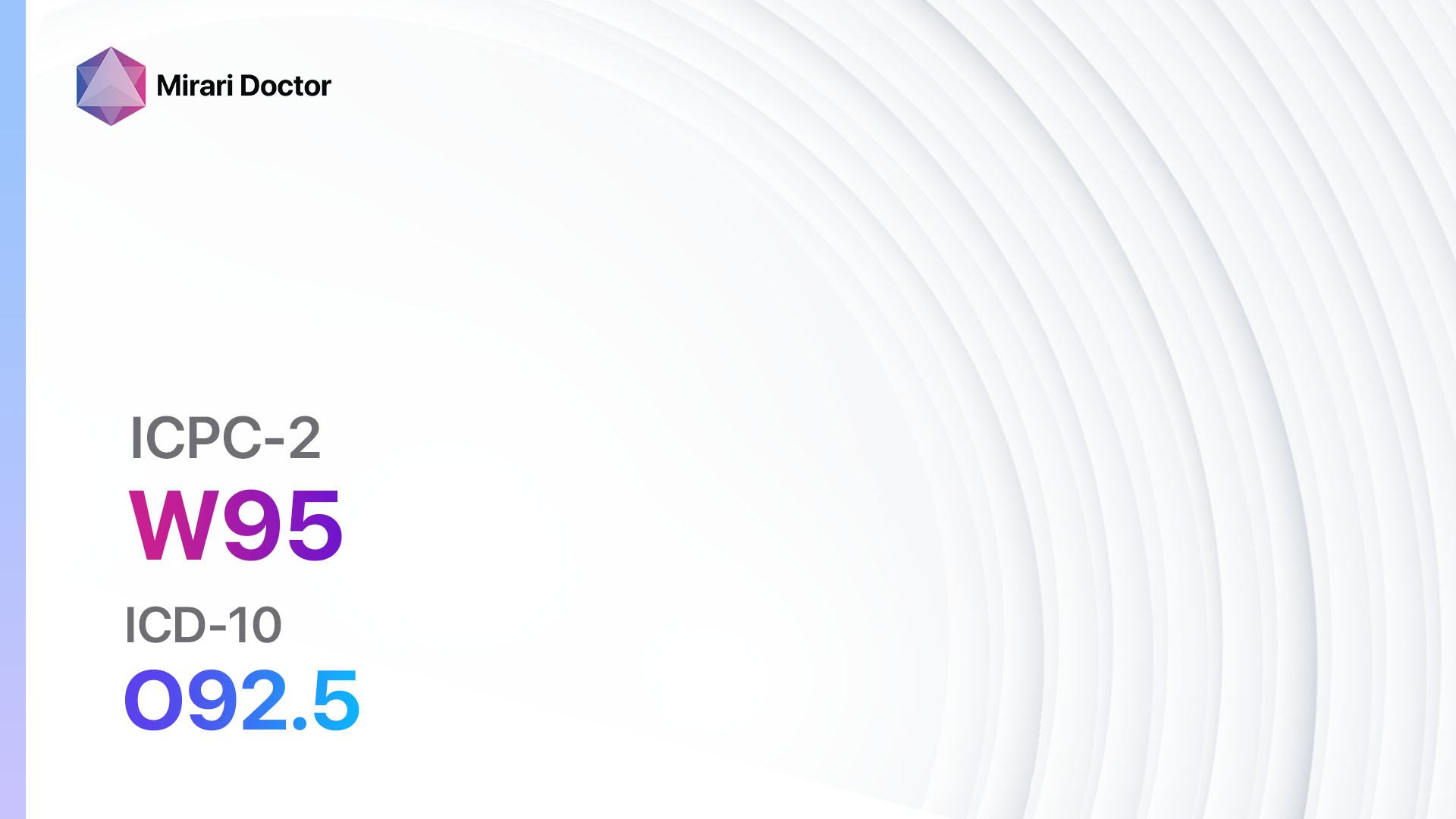
Introduction
Breast disorders in pregnancy can cause significant discomfort and anxiety for expectant mothers. It is important to diagnose and manage these conditions promptly to ensure the well-being of both the mother and the baby[1]. This guide aims to provide healthcare professionals with a comprehensive approach to diagnosing and managing breast disorders in pregnancy other than breast cancer.
Codes
- ICPC-2 Code: W95 Breast disorder in pregnancy/puerperium other[2]
- ICD-10 Code: O92.5 Other and unspecified disorders of breast and lactation associated with childbirth[3]
Symptoms
- Breast pain: Expectant mothers may experience breast pain, which can range from mild to severe. The pain may be constant or intermittent and may worsen with hormonal changes.
- Breast swelling: The breasts may become swollen and tender due to hormonal changes during pregnancy.
- Nipple discharge: Some women may experience nipple discharge, which can be clear, yellow, or milky in color.
- Breast lumps: Breast lumps may develop during pregnancy, which can be benign or malignant[4].
Causes
- Hormonal changes: The hormonal changes that occur during pregnancy can cause breast swelling, tenderness, and pain.
- Increased blood flow: Increased blood flow to the breasts during pregnancy can lead to breast engorgement and discomfort.
- Milk production: The breasts prepare for milk production during pregnancy, which can cause breast changes and lumps[5].
Diagnostic Steps
Medical History
- Gather information about the patient’s symptoms, including the duration, severity, and any associated factors.
- Ask about any previous breast disorders or surgeries.
- Inquire about the patient’s obstetric history, including the number of pregnancies and any complications.
- Assess the patient’s risk factors for breast disorders, such as a family history of breast cancer or previous breast biopsies[6].
Physical Examination
- Perform a thorough breast examination, including inspection and palpation of both breasts and the axillary lymph nodes.
- Look for any signs of inflammation, such as redness or warmth.
- Assess the size, shape, and consistency of any breast lumps.
- Check for nipple discharge and assess its color and consistency[7].
Laboratory Tests
- Blood tests: Routine blood tests may be done to assess the patient’s overall health and rule out any underlying conditions.
- Hormone levels: Hormone levels, such as estrogen and progesterone, may be measured to evaluate hormonal changes during pregnancy.
- Tumor markers: Tumor markers, such as carcinoembryonic antigen (CEA) and cancer antigen 15-3 (CA 15-3), may be measured to assess the risk of malignancy[8].
Diagnostic Imaging
- Ultrasound: Ultrasound is the imaging modality of choice for evaluating breast lumps during pregnancy. It can help determine the nature of the lump and guide further management.
- Mammography: Mammography is generally avoided during pregnancy due to the potential harm to the fetus. However, it may be considered in certain cases if the benefits outweigh the risks.
- Magnetic resonance imaging (MRI): MRI may be used in specific situations to further evaluate breast abnormalities detected on ultrasound[9].
Other Tests
- Breast biopsy: If a breast lump is suspicious for malignancy, a biopsy may be performed to obtain a tissue sample for further evaluation.
- Fine-needle aspiration (FNA): FNA may be used to aspirate fluid from a breast cyst or to obtain a sample from a solid breast lump.
- Ductography: Ductography involves injecting a contrast agent into the milk ducts to evaluate any abnormalities or nipple discharge[10].
Follow-up and Patient Education
- Schedule regular follow-up appointments to monitor the patient’s symptoms and response to treatment.
- Educate the patient about breast self-examination and the importance of reporting any changes or new symptoms.
- Provide information about breastfeeding techniques and support resources[1][4].
Possible Interventions
Traditional Interventions
Medications:
Top 5 drugs for Breast disorder in pregnancy other:
- Acetaminophen (e.g., Tylenol):
- Cost: $5-$10 for a bottle of 100 tablets.
- Contraindications: Allergy to acetaminophen.
- Side effects: Rare, but can include liver damage with high doses.
- Severe side effects: Liver failure.
- Drug interactions: Alcohol, certain medications (e.g., warfarin).
- Warning: Do not exceed the recommended dose.
- Ibuprofen (e.g., Advil, Motrin):
- Cost: $5-$10 for a bottle of 100 tablets.
- Contraindications: Allergy to ibuprofen, history of stomach ulcers or bleeding disorders.
- Side effects: Upset stomach, heartburn.
- Severe side effects: Stomach ulcers, kidney problems.
- Drug interactions: Blood thinners, certain medications (e.g., ACE inhibitors).
- Warning: Do not exceed the recommended dose or use for prolonged periods.
- Antifungal creams (e.g., Clotrimazole, Miconazole):
- Cost: $5-$15 for a tube of cream.
- Contraindications: Allergy to antifungal medications.
- Side effects: Skin irritation, itching.
- Severe side effects: Rare, but can include severe allergic reactions.
- Drug interactions: None known.
- Warning: Use as directed and continue treatment for the recommended duration.
- Antibiotics (e.g., Amoxicillin, Cephalexin):
- Cost: $10-$20 for a course of treatment.
- Contraindications: Allergy to antibiotics.
- Side effects: Upset stomach, diarrhea.
- Severe side effects: Rare, but can include severe allergic reactions.
- Drug interactions: Certain medications (e.g., oral contraceptives).
- Warning: Take the full course of antibiotics as prescribed.
- Topical corticosteroids (e.g., Hydrocortisone):
- Cost: $5-$15 for a tube of cream.
- Contraindications: Allergy to corticosteroids.
- Side effects: Skin thinning, discoloration.
- Severe side effects: Rare, but can include allergic reactions.
- Drug interactions: None known.
- Warning: Use as directed and do not apply to broken or infected skin.
Alternative Drugs:
- Antihistamines (e.g., Loratadine, Cetirizine): May help relieve itching and allergic symptoms.
- Antibacterial creams (e.g., Neosporin): Can be used for localized bacterial infections.
- Antiviral medications (e.g., Acyclovir): May be prescribed for viral infections, such as herpes.
Surgical Procedures:
- Surgical intervention is generally not indicated for most breast disorders in pregnancy. However, in rare cases where a breast abscess or other complications arise, surgical drainage or excision may be necessary.
Alternative Interventions
- Cold compress: Applying a cold compress to the breasts can help reduce swelling and relieve pain. Cost: Free.
- Breast massage: Gentle breast massage can help improve lymphatic drainage and reduce breast discomfort. Cost: Free.
- Supportive bra: Wearing a well-fitting, supportive bra can help alleviate breast pain and provide comfort. Cost: $20-$50.
- Warm compress: Applying a warm compress to the breasts can help relieve breast pain and promote milk flow. Cost: Free.
- Herbal remedies: Some herbal remedies, such as chamomile or lavender, may provide relief from breast discomfort. Cost: Varies depending on the specific remedy.
Lifestyle Interventions
- Proper nutrition: A balanced diet rich in fruits, vegetables, and whole grains can support overall breast health. Cost: Varies depending on dietary choices.
- Regular exercise: Engaging in regular physical activity can help improve circulation and reduce breast discomfort. Cost: Free or gym membership fees.
- Stress management: Practicing stress management techniques, such as deep breathing or meditation, can help reduce breast pain associated with stress. Cost: Free.
- Avoiding tight clothing: Wearing loose-fitting clothing can help reduce breast discomfort and improve circulation. Cost: Varies depending on clothing choices.
- Breastfeeding education and support: Educating expectant mothers about proper breastfeeding techniques and providing support can help prevent and manage breast disorders. Cost: Varies depending on educational resources and support services.
It is important to note that the cost ranges provided are approximate and may vary depending on the location and availability of the interventions.
Mirari Cold Plasma Alternative Intervention
Understanding Mirari Cold Plasma
- Safe and Non-Invasive Treatment: Mirari Cold Plasma is a safe and non-invasive treatment option for various skin conditions. It does not require incisions, minimizing the risk of scarring, bleeding, or tissue damage.
- Efficient Extraction of Foreign Bodies: Mirari Cold Plasma facilitates the removal of foreign bodies from the skin by degrading and dissociating organic matter, allowing easier access and extraction.
- Pain Reduction and Comfort: Mirari Cold Plasma has a local analgesic effect, providing pain relief during the treatment, making it more comfortable for the patient.
- Reduced Risk of Infection: Mirari Cold Plasma has antimicrobial properties, effectively killing bacteria and reducing the risk of infection.
- Accelerated Healing and Minimal Scarring: Mirari Cold Plasma stimulates wound healing and tissue regeneration, reducing healing time and minimizing the formation of scars.
Mirari Cold Plasma Prescription
Video instructions for using Mirari Cold Plasma Device – W95 Breast disorder in pregnancy/puerperium other (ICD-10:O92.5)
| Mild | Moderate | Severe |
| Mode setting: 1 (Infection) Location: 0 (Localized) Morning: 15 minutes, Evening: 15 minutes | Mode setting: 1 (Infection) Location: 0 (Localized) Morning: 30 minutes, Lunch: 30 minutes, Evening: 30 minutes | Mode setting: 1 (Infection) Location: 0 (Localized) Morning: 30 minutes, Lunch: 30 minutes, Evening: 30 minutes |
| Mode setting: 2 (Wound Healing) Location: 0 (Localized) Morning: 15 minutes, Evening: 15 minutes | Mode setting: 2 (Wound Healing) Location: 0 (Localized) Morning: 30 minutes, Lunch: 30 minutes, Evening: 30 minutes | Mode setting: 2 (Wound Healing) Location: 0 (Localized) Morning: 30 minutes, Lunch: 30 minutes, Evening: 30 minutes |
| Mode setting: 7 (Immunotherapy) Location: 1 (Sacrum) Morning: 15 minutes, Evening: 15 minutes | Mode setting: 7 (Immunotherapy) Location: 1 (Sacrum) Morning: 30 minutes, Lunch: 30 minutes, Evening: 30 minutes | Mode setting: 7 (Immunotherapy) Location: 1 (Sacrum) Morning: 30 minutes, Lunch: 30 minutes, Evening: 30 minutes |
| Total Morning: 45 minutes approx. $7.50 USD, Evening: 45 minutes approx. $7.50 USD | Total Morning: 90 minutes approx. $15 USD, Lunch: 90 minutes approx. $15 USD, Evening: 90 minutes approx. $15 USD | Total Morning: 90 minutes approx. $15 USD, Lunch: 90 minutes approx. $15 USD, Evening: 90 minutes approx. $15 USD |
| Usual treatment for 7-60 days approx. $105USD – $900 USD | Usual treatment for 6-8 weeks approx. $1,890USD – $2,520 USD | Usual treatment for 3-6 months approx. $4,050 USD – $8,100 USD |
 |
|
Use the Mirari Cold Plasma device to treat Breast disorder in pregnancy other effectively.
WARNING: MIRARI COLD PLASMA IS DESIGNED FOR THE HUMAN BODY WITHOUT ANY ARTIFICIAL OR THIRD PARTY PRODUCTS. USE OF OTHER PRODUCTS IN COMBINATION WITH MIRARI COLD PLASMA MAY CAUSE UNPREDICTABLE EFFECTS, HARM OR INJURY. PLEASE CONSULT A MEDICAL PROFESSIONAL BEFORE COMBINING ANY OTHER PRODUCTS WITH USE OF MIRARI.
Step 1: Cleanse the Skin
- Start by cleaning the affected area of the skin with a gentle cleanser or mild soap and water. Gently pat the area dry with a clean towel.
Step 2: Prepare the Mirari Cold Plasma device
- Ensure that the Mirari Cold Plasma device is fully charged or has fresh batteries as per the manufacturer’s instructions. Make sure the device is clean and in good working condition.
- Switch on the Mirari device using the power button or by following the specific instructions provided with the device.
- Some Mirari devices may have adjustable settings for intensity or treatment duration. Follow the manufacturer’s instructions to select the appropriate settings based on your needs and the recommended guidelines.
Step 3: Apply the Device
- Place the Mirari device in direct contact with the affected area of the skin. Gently glide or hold the device over the skin surface, ensuring even coverage of the area experiencing.
- Slowly move the Mirari device in a circular motion or follow a specific pattern as indicated in the user manual. This helps ensure thorough treatment coverage.
Step 4: Monitor and Assess:
- Keep track of your progress and evaluate the effectiveness of the Mirari device in managing your Breast disorder in pregnancy other. If you have any concerns or notice any adverse reactions, consult with your health care professional.
Note
This guide is for informational purposes only and should not replace the advice of a medical professional. Always consult with your healthcare provider or a qualified medical professional for personal advice, diagnosis, or treatment. Do not solely rely on the information presented here for decisions about your health. Use of this information is at your own risk. The authors of this guide, nor any associated entities or platforms, are not responsible for any potential adverse effects or outcomes based on the content.
Mirari Cold Plasma System Disclaimer
- Purpose: The Mirari Cold Plasma System is a Class 2 medical device designed for use by trained healthcare professionals. It is registered for use in Thailand and Vietnam. It is not intended for use outside of these locations.
- Informational Use: The content and information provided with the device are for educational and informational purposes only. They are not a substitute for professional medical advice or care.
- Variable Outcomes: While the device is approved for specific uses, individual outcomes can differ. We do not assert or guarantee specific medical outcomes.
- Consultation: Prior to utilizing the device or making decisions based on its content, it is essential to consult with a Certified Mirari Tele-Therapist and your medical healthcare provider regarding specific protocols.
- Liability: By using this device, users are acknowledging and accepting all potential risks. Neither the manufacturer nor the distributor will be held accountable for any adverse reactions, injuries, or damages stemming from its use.
- Geographical Availability: This device has received approval for designated purposes by the Thai and Vietnam FDA. As of now, outside of Thailand and Vietnam, the Mirari Cold Plasma System is not available for purchase or use.
References
- Sabate JM, Clotet M, Torrubia S, et al. Radiologic evaluation of breast disorders related to pregnancy and lactation. Radiographics. 2007;27(Suppl 1):S101-124.
- WONCA International Classification Committee. ICPC-2: International Classification of Primary Care. Oxford University Press; 2005.
- World Health Organization. ICD-10: International Statistical Classification of Diseases and Related Health Problems, 10th Revision. 2019.
- Robbins J, Jeffries D, Roubidoux M, Helvie M. Accuracy of diagnostic mammography and breast ultrasound during pregnancy and lactation. AJR Am J Roentgenol. 2011;196(3):716-722.
- Taylor D, Lazberger J, Ives A, Wylie E, Saunders C. Reducing delay in the diagnosis of pregnancy-associated breast cancer: how imaging can help us. J Med Imaging Radiat Oncol. 2011;55(1):33-42.
- Son EJ, Oh KK, Kim EK. Pregnancy-associated breast disease: radiologic features and diagnostic dilemmas. Yonsei Med J. 2006;47(1):34-42.
- Whang IY, Lee J, Kim KT. Galactocele as a changing axillary lump in a pregnant woman. Arch Gynecol Obstet. 2007;276(4):379-382.
- Hicks DH, Lester SC. Diagnostic Pathology: Breast. Volume 9. Salt Lake City: Amirsys; 2012.
- Oh YJ, Choi SH, Chung SY, Yang I, Woo JY, Lee MJ. Spontaneously infarcted fibroadenoma mimicking breast cancer. J Ultrasound Med. 2009;28(10):1421-1423.
- Brennan M, Houssami N, French J. Management of benign breast conditions. Part 2—breast lumps and lesions. Aust Fam Physician. 2005;34(4):253-255.
Related articles
Made in USA


